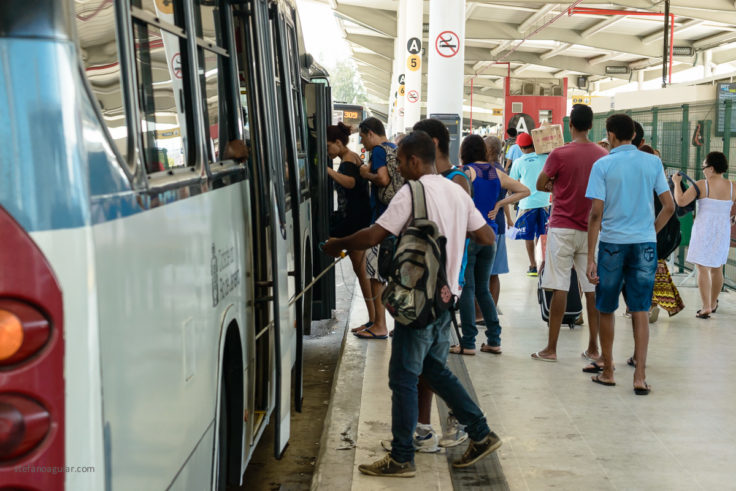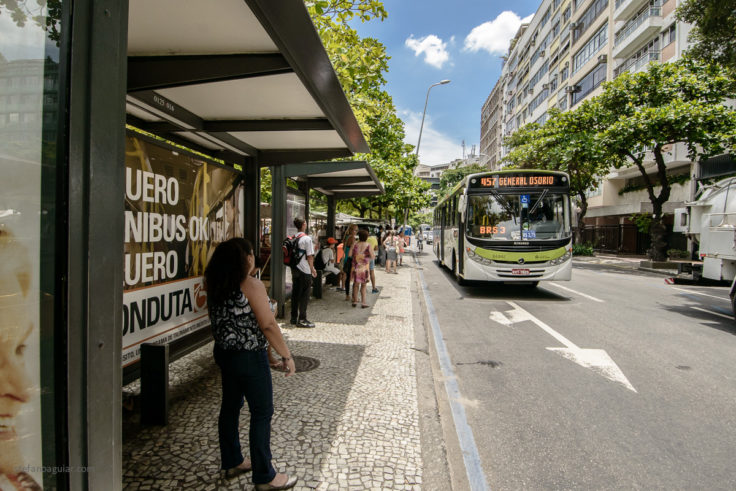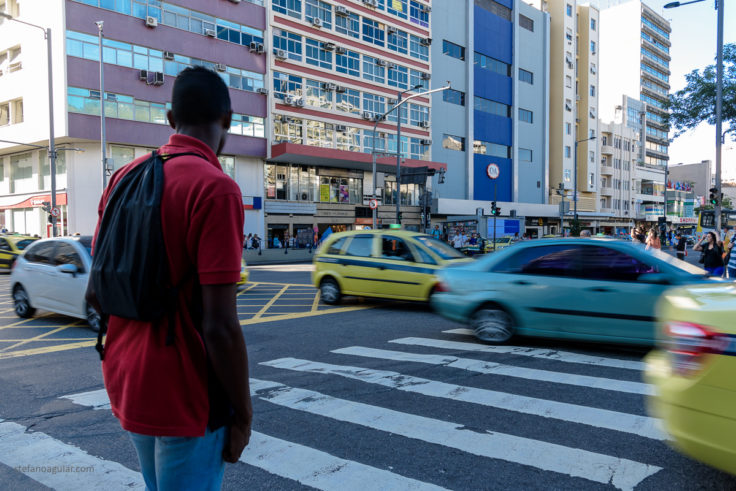
August 12, 2022
Exploring the Intersection of Race and Mobility in Brazil
Access to transport is not the same for everyone. In Brazil, structural racism affects the access, supply, and provision of many public transport services.
ITDP Brazil launched its A Cor da Mobilidade (The Color of Mobility) project in 2020 to take a deep-dive into how racism affects the country’s transport systems.
While wealthier, primarily White people live in the central regions of Brazil’s cities — closer to employment, opportunities, services, and transport networks — the majority of Black and lower-income people live further out with more barriers to everyday commuting. In addition to living farther from key transport systems, Black, brown and low-income Brazilians pay higher fares, use more overcrowded buses and trains, and have fewer transport options available to help them reach essential destinations. These populations are also frequently unaccounted for in public policy and planning, since the main data collection tools on urban displacement in the country fail to consider racial demographics.
The origins of Black and low-income people living on the urban periphery — further from public transport, accessible cycling infrastructure, and job opportunities — can be traced back to the abolition of slavery in Brazil in 1888. This is a relatively recent occurrence, considering that Brazil was the last country in the Western world to abolish slavery. Formerly enslaved people did not receive any kind of financial support related to housing or work, which meant that the systemic inequality between formerly enslaved Blacks, White people, and their descendants was maintained across the country’s socio-economic structures over the last century.
The impacts of such institutionalized inequality can be observed in the disparate ways in which these populations access and move around their cities, as well as in the unequal distribution of economic and employment opportunities. This has resulted in patterns and cycles of prejudice and discrimination against Black, brown, and low-income Brazilians across the country’s infrastructure. Socio-territorial exclusion has been happening in the country’s urban areas since the beginning of the 20th century, and it continues to concentrate minority and low-income groups in regions far from economic opportunities and essential services alongside broken infrastructure.

To explore these issues and provide a critical spotlight on race, mobility, and access, ITDP Brazil launched its A Cor da Mobilidade (The Color of Mobility) project in 2020 to take a deep-dive into how racism affects people across the country’s transport systems. The project began with a series of articles published on ITDP Brazil’s blog, tackling structural racism in Brazil’s public spaces, particularly on public transportation. These interviews with urban experts and advocates addressed how the country does not adequately meet the needs of Black, brown, and low-income people in urban mobility systems due to a lack of representation at the decision-making levels of transportation planning and management. Read more about the project’s conception and launch here.
ITDP Brazil and its partners promoted these interviews across local communications and media channels to highlight the role that racial and economic injustice plays in the everyday lives of Brazilians, particularly when it comes to issues of mobility. In 2021, the team took the project to a new level by convening and facilitating conversation circles with urban and transport stakeholders, experts, and activists to elevate the discussion, assess challenges to and opportunities for change, and share knowledge. With support from local advocacy organizations that included Pedal na Quebrada and Ciclocidade, the project held three gatherings around several key themes in October 2021. The major questions the conversations addressed included:

Why does urban mobility need to be anti-racist?
- The first conversation discussed the challenges of population displacement among the Black community in Brazil and strategies for taking an anti-racist lens to mobility, with commentary from Rafaela Albergaria and Paíque Duques Santarém, editors of the book Mobilidade Antirrascista (Anti-racist Mobility).
How do you build fair and quality transport systems for all?
- The second conversation discussed mobility and the right to the city movement, focusing on the needs and difficulties of the Black population in Brazil. Architects and urban planners Sarah Esli, designer and activist for access to the city, and Luana Costa, from the Nossa BH Movement, participated in the dialogue.
Cycling as resistance: How does racism affect cycling mobility?
- The last conversation discussed the main challenges restricting cycling for the Black, mixed-race, and low-income populations. The dialogue included Carlos GreenBike, from Pedala Queimados, and Jamile Santana, from Afro Ciclo.

The meetings were attended by nearly 180 participants, with media coverage provided by Rio On Watch, which spotlighted the discussions in a multi-part series. The conversations were successful in sharing expert and local knowledge, experiences, and lessons learned about racial and structural inequalities in transport and mobility across Brazil. The discussions that took place made it possible to promote ongoing exchanges on these difficult and complex issues and create spaces for deepening the understanding of the country’s systemic transport challenges.
ITDP Brazil compiled the findings from its interviews and discussions in a report released in May 2022. The report consolidates the main takeaways from the conversation events and elevates the everyday experiences of Black, brown, and low-income Brazilians when it comes to transportation and mobility, providing a key platform for underrepresented perspectives. With this project, the ITDP team continues to create bridges and opportunities for knowledge exchange in order to advance more equitable and sustainable transport systems for all types of people across Brazil.
Access the full report on the project in Portuguese here >>
View recordings of the conversation circles (held in Portuguese) here >>
Read the coverage of the project in English on Rio on Watch >>
